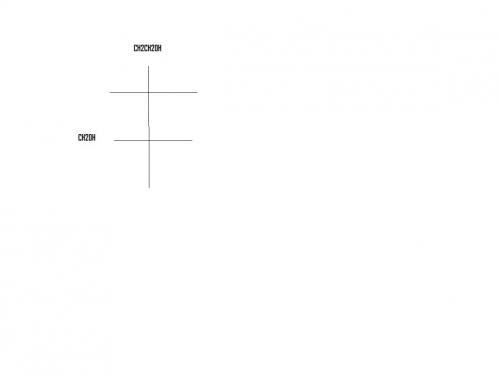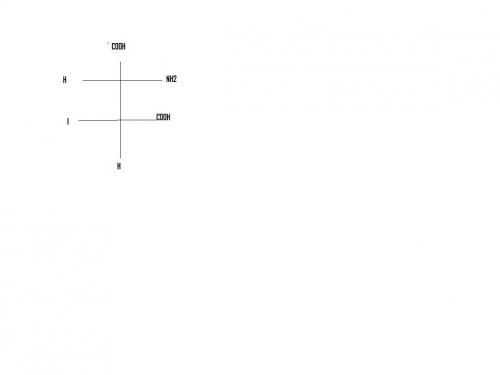

Really Lost
Members-
Posts
19 -
Joined
-
Last visited
Profile Information
-
Favorite Area of Science
Organic Chemistry
Really Lost's Achievements

Quark (2/13)
0
Reputation
-
Since if we have a reaction where cyclohexanol is oxidized by NaOCl. Can we assume that cyclohexanol is the reducing agent? Since the reducing agent is supposed to get oxidized by the oxidizer in an oxidation-reduction reaction.
-
I did a test with the below question Which of the following is a reducing agent? a. cyclohexanol b. Na2CO3 c. MgSO4 d. NaOCl I couldnt figure out the answer I understood the following about each compound cyclohexanol is an alcohol and might be the product of a reduction Na2Co3 is a base sometimes used in acid neutralization MgSO4 I believe is a drying agent NaOCl is an oxidizing agent I thought there might have been a mistake in the question Anyone know what the correct answer should have been?
-
How about a T7 RNA Polymerase and Promoter?
-
Hi I wondering if someone could help me. If a plasmid that is in a cell has a specific type of RNA promotor and sits besides a Reporter Gene (but does not contain the gene for RNA polymerase for that promotor) and the cell it is in has the RNA polymerase gene in its chromosomal DNA is there a specific name for the process in which after the production of the RNA poylmerase has been induced and completed how does the RNA polymerase travel to the plasmid to bind to its promoter in order to create mRNA that are used to express the Reporter Gene. Assuming that I have the right idea, what would this process be called? Since I am referring to a bacteria cell and not have a nucleus I assume it doesn't matter where in the cell this takes place.
-
Thanks for your reply I think I understand it better. In the drawing I provided the COOH would still be higher priority than the attached to the second stereocenter Iodine because the Sp2 carbon still takes precedence. You look one carbon at a time after the (Oxygens, Bromines, Fluorines etc) until you find priority. I have one final question If we have two OH that are of equal distance (in carbons) from the stereocenter. See drawing, how do we prioritizes the two? Is the CH2CH2OH counted as being the same priority as the CH2OH which is another Carbon away from the stereocenter. I have not drawn the other substituents.
-
Thanks for your response. Perhaps I do not understand proper Priority Rules that well As I understand it goes like this. 1. We first look at the atomic number of the attached group. but we tend not to include the mass of the carbons in terms of priorty. CH3 and CH2CH3 for example tend to get the lowest priority except for -H 2. The more carbons between Stereocenter and the substiuent generally mean it gets a lower priority. However if they are of equal distance from the stereocenter, the substituant with the double bond (sp2) will get priority as is the case with the fischer projection you showed. The thing I didn't understand was that when you look at the first sterocenter. the COOH and the NH2 attached to the second stereocenter are the same number of carbons away from the stereocenter. Is it only because of the sp2 on the carboxyl that makes it a higher priority over an NH2 when it is attached another carbon? When an NH2 is attached directly to the stereo center it is considered a higher priority than COOH? If we replaced the NH2 attached to the second stereocenter with Iodine, would the COOH above the first stereocenter still have a higher priority? I have attached Pic of the fischer projection of this compound
-
Oh the brackets arent actually brackets I just needed to use something to draw lines. Look at it as if it were a fischer projection. Unfortuanetly when I posted the space got all messed up. picture it as one horizontal line with to parallel horizontal lines.The C1 and the C2 represent the two carbon stereocenters at the crossing points
-
I have a compound that looks like this COOH { H [[[[[[[[[[[[[[C1[[[[[[[[[[[[[ NH2 } NH2[[[[[[[[[[[C2[[[[[[[[[[[[[ COOH [ H I know that NH2>COOH so NH2 is 1st priority. But when I am assigning second priority to I give it the COOH at the top or do I look below and use the NH2 attached to the second stereocenter C2? I am unsure with a group such as NH2 which normally has higher priority than COOH will still still have higher priority when it is attached to another carbon and not attached to the stereocenter. Any ideas?
-
Hi I need help understanding the proper steps it takes to get balance oxidation equation for the following C5H12O + NaOCl + CH3COOH ----> C5H10O + CH3CO-Na+ + HCl + H20 I understand the basic mechanics of separating the organic part of the equation but how do I do the inorganic part? For example I understand that at the beginning I take out the spectator atom Na from NaOCl then I have 2H+ OCl ---> H2O(to balance the oxygens) + Cl- and 2H+ + C5H12O = C5H10 But how is the HCl formed? Where does the hydrogen come from for the HCl? Do you reintegrate the acetic acid at the end? Are there any free electrons that need to be cancelled out? Proper steps would be most appreciated Thank you Edit: I found another source that shows the products to be the Ketone plus NaCl and H2O. Is this actually correct. It seems strange that the Acetic Acid is not part of the products in that case.
-

Question about running plasmids and restriction enzymes
Really Lost replied to Really Lost's topic in Genetics
Thanks for your response. One other thing, I ran a plasmid called pUC18:URA3 with HindIII and got 4 fragments. However I don't know if that is correct. I looked up pUC18 and it doesnt seem to have any restriction sites except for at the Multi Clonal Site. So I am wondering how is it possible to have that many fragments. I think the URA3 fragament that is attached to the plasmid only has one hindIII site. not sure though. I thought there might be a problem with the enzyme or the buffer. How can I find out for sure how many HindIII restriction sites it has (and therefore how many fragments I should get)? -
Hi I ran a gel with plasmids digested by a restriction enzyme. The cut plasmid is in three seperate bands at 4000 bp, 3000 and 2000 I also ran a control with the plasmid without a the restriction enzyme in another well of the gel. It has moved further past the first cut band to about 3500 bp? Is this possible because the plasmid is coiled and the cut pieces of the digested plasmids are more linear? Or is this not possible. There seems to be two bands in my control which has me worried. the other which much thicker could be RNA I suppose. right? Thanks
-
Hi I was wondering if someone could provide a link or post/attach the full reaction mechanism (including all steps) of the dehydration of a secondary alcohol, say 2-butanol including all the end products (is there a hydrogen ion left at the end?) My instructior showed the reaction with H2PO as the catalyst but I think I copied it wrong and I haven't been able to find it online. Thanks.
-
When you are making an agarose gel at one point the mixture of agarose and water might be heated in a microwave. Why would you also put in a glass of water in the microwave? I think some how the glass of water some how prevents the agarose mixture from boiling over. But how does this really work? This may be a chemistry physics question.
-
Hi Hypothetically speaking, if I run two compounds on an HPLC and they have poor separation/poor baseline resolution how can I improve the separation in terms of changing flow rate. Do I increase the flow rate or lower the flow rate? I know that lowering the flow rate will make the peaks wider.
-

Enzyme Activity Velocity Question
Really Lost replied to Really Lost's topic in Biochemistry and Molecular Biology
oK but then how do you calculate the mass of the enzymes if they are being produced by cells rather than inserted directly into the solution?


